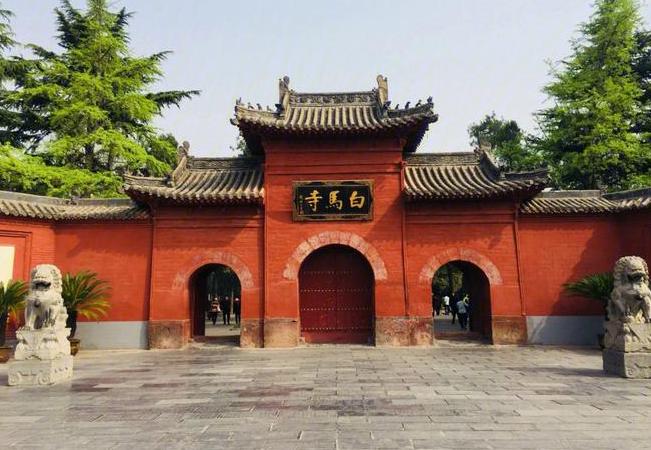Temples are places where monks study, live and work. From ancient times to the present, Buddhism has developed rapidly in China, leaving behind many temples. Some temples also exist for many years. This post introduces you to the top 10 most beautiful temples in China.
1.Potala Palace布达拉宫
Potala Palace is located on Maburi Mountain in the northwest of Lhasa, the capital of Tibet Autonomous Region of China. It was built as the palace of Songtsen Gampo after he moved his capital to Lhasa. After being rebuilt in the 17th century, it became the residence of the winter palace of the Dalai Lamas and the center of theocratic rule in Tibet.
The east and west sides of the main building of Potala Palace extend downward respectively, connecting with the tall palace wall. The palace wall is 6 meters high, 4.4 meters wide at the bottom, and 2.8 meters wide at the top. It is built with rammed earth and covered with bricks and stones. There is a three-story gate tower on the east, south and west sides of the wall, and a turret on the southeast and northwest corners. The area surrounded by the palace walls all belong to Potala Palace.
The mountain front part inside the palace wall is called “Syracuse”, where the offices of the former Tibetan government Kashag are located, such as the court, the Sutra Printing Institute, and the Tibetan Army Command. In addition, palace auxiliary facilities such as workshops, stables, water supply offices, warehouses, and prisons are also located here.
The part behind the mountain inside the palace wall is called “Linka”, which is mainly a group of garden buildings centered on Longwangtan, which is the back garden of Potala Palace. When the fifth Dalai Lama rebuilt the Potala Palace, he took soil here and formed a deep pool. Later, the sixth Dalai Lama built a three-story octagonal glazed pavilion in the center of the lake, in which the statue of the Dragon King was enshrined, so it was called Dragon King Pool.
Visiting Potala Palace needs to follow all the taboos of Tibetan Buddhism, such as not wearing hats, not taking pictures (meaning that after entering the palace, some “exterior scenes” can be taken outside the palace), not stepping on the threshold, etc. All tourists need to complete the visit within 1 hour, so they are not allowed to stay anywhere in the palace. After the visit, come out from the west gate of Potala Palace and go down the hill to the main gate of Potala Palace.
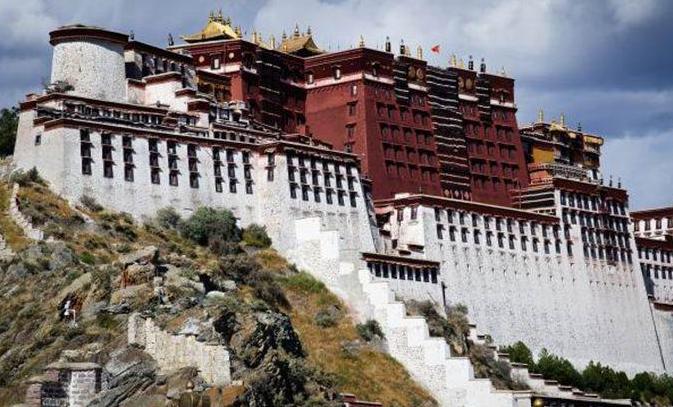
2.Jokhang Temple大昭寺
Jokhang Temple, also known as “Zulakang” and “Juekang” (meaning Buddhist temple in Tibetan), is located in the center of the old city of Lhasa. It is a Tibetan Buddhist temple built by King Songtsen Gampo. “The reputation is related to this Buddha statue. The temple was originally called “Jasha”, and later Jasa became the name of the city and evolved into the current “Lhasa”. After the completion of the Jokhang Temple, it was modified and expanded repeatedly in the Yuan, Ming and Qing dynasties before it formed the current scale.
The Jokhang Temple has a history of more than 1300 years and has the supreme status in Tibetan Buddhism. The Jokhang Temple is the most glorious Tubo period building in Tibet, and the earliest civil structure building in Tibet, and created a Tibetan-style Pingchuan-style temple city bureau. The circle around the Sakyamuni Buddha Hall in the center of the Jokhang Temple is called “Nangkor”, the circle around the outer wall of the Jokhang Temple is called “Bakhor”, and the street radiating outside the Jokhang Temple is called “Bakhor Street”, that is, Bajiao Street . With the Jokhang Temple as the center, a large circle including the Potala Palace, Yaowang Mountain, and Ramoche Temple is called “Lin Kuo”. The three rings from the inside to the outside are the route for the Tibetans to perform the prayer turning ceremony.
The Jokhang Temple combines the architectural styles of Tibet, Tang Dynasty, Nepal, and India, and has become a thousand-class example of Tibetan religious architecture. Incense is lingering in front of the temple all day long, and the devout worship of believers left a deep imprint of kowtowing on the bluestone floor in front of the gate. Thousands of butter lamps are always on, leaving traces of the years and pilgrims.
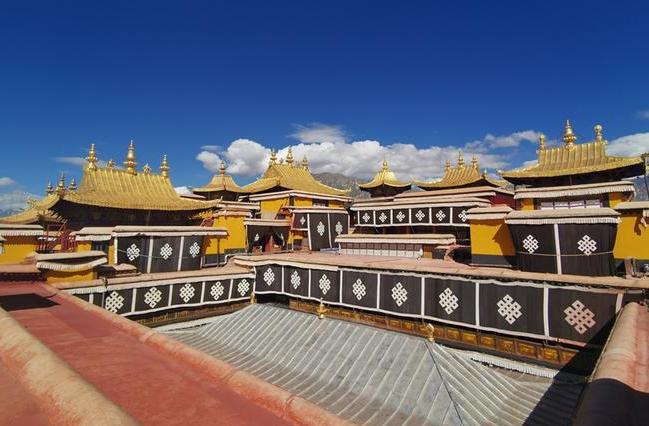
3.Fengguo Temple奉国寺
Fengguo Temple is located in Yi County, Jinzhou City, Liaoning Province, China. It was first built in the ninth year of Liao Kaitai (1020). It was originally named Xianxi Temple and later renamed Fengguo Temple. Fengguo Temple covers an area of about 60,000 square meters.
The Liao, Jin and Yuan Dynasties were the heyday of Fengguo Temple. In the Ming and Qing Dynasties, only the Daxiong Hall remained. Fengguo Temple is one of the three existing temples of the Liao Dynasty in China. Its iconic ancient building, the Daxiong Hall, is the largest Buddhist temple left in ancient times. The hall houses the oldest and largest clay sculpture group of colorful Buddha statues in the world.
The Daxiong Hall, the main building of Fengguo Temple, and the whole temple are the most typical examples of Liao and Jin temples. Among them, the Daxiong Hall is the highest achievement of Buddhist architecture in the Liao Dynasty, representing the highest level of Chinese architecture in the eleventh century.
In 1961, it was announced by the State Council of the People’s Republic of China as the first batch of national key cultural relics protection units. In 2009, it was rated as an AAAA-level tourist attraction by the China National Tourism Administration.
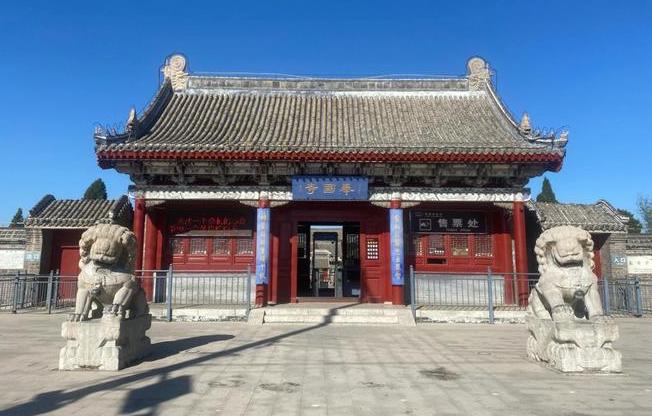
4.Xiaoxitian小西天
Qianfo Temple, also known as Xiaoxitian, is located on the top of Fenghuang Mountain, one mile west of Xixian County, Shanxi Province. It is a Buddhist Zen temple founded by Zen Master Dongming in the Ming Dynasty in the second year of Ming Chongzhen (1629). It got its name because there are thousands of Buddhas in the Daxiong Hall, and later changed its name to Xiaoxitian to distinguish it from another Ming Dynasty temple in the south of the city, “Daxitian”.
The Qianfo Temple is built on top of the mountain, with ingenious conception, different heights, well-proportioned layout, and making the best use of the land as a whole, especially the wooden bone and clay hanging sculpture art in the hall of the Daxiong Hall, which is covered with gold and colored, resplendent, exquisite and exquisite. The colored paintings on beam frames are rich, elegant and distinctive, and can be called the “single song of hanging sculptures” in the history of Chinese sculpture art. Only the fine colored sculptures in the Daxiong Hall and Baodian account for more than 4% of the Ming and Qing colored sculptures in the province. The small hall of only 169.6 square meters can be called a treasure of Buddhist painted sculpture art. The official version of “Ming Yongle Northern Tibet” of Qianfo Temple has become a rare treasure for studying the history of Chinese Buddhism, Tibetan scriptures, ethics and even folk customs. In 1996, Xiaoxitian was announced as the fourth batch of national key cultural relics protection units. In the same year, it was approved by the religious department of Linfen City as a religious activity site.
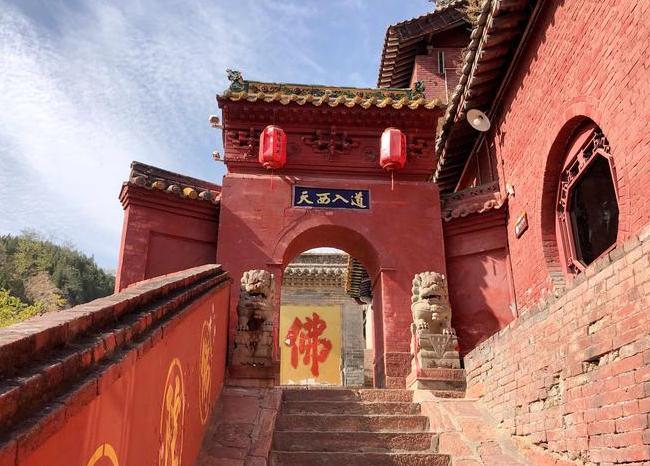
5.Miaoying Temple妙应寺
Miaoying Temple, commonly known as Baita Temple, is located at No. 171 Fuchengmen Inner Street, Xicheng District, Beijing, China. It is a Gelugpa monastery of Tibetan Buddhism.
Miaoying Temple, first built in the Yuan Dynasty, was originally named “Dasheng Shou Wan’an Temple”. The White Pagoda built in the Yuan Dynasty in the temple is the earliest and largest Lama pagoda in China. In 1961, the “White Pagoda of Miaoying Temple” was announced by the State Council of the People’s Republic of China as one of the first batch of national key cultural relics protection units.
Miaoying Temple, after two years and seven months of repairs, reopened to the public on December 6, 2015. On November 19, 2019, the White Pagoda of Miaoying Temple will be closed for 2 years from June 2019 due to cultural relic building repairs and color painting protection projects.
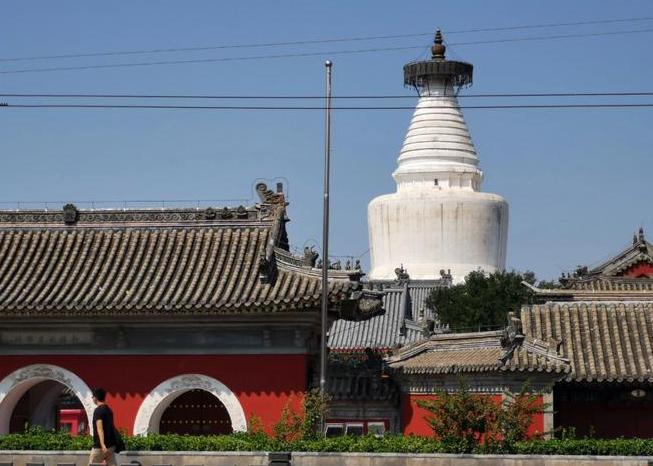
6.Penglai Pavilion蓬莱阁
Penglai Pavilion, located in Penglai Water City Scenic Area, No. 7 Yingbin Road, Penglai District, Yantai City, Shandong Province, is located on Danya Mountain. It was first built in the sixth year of Jiayou in the Northern Song Dynasty (1061). It maintains the original appearance of the Northern Song Dynasty; it is famous all over the world for the legend of “Eight Immortals Crossing the Sea” and the spectacle of “Mirage”. Eight of the “Top Ten Scenic Spots of Penglai” are located in Penglai Pavilion; it has been known as “a fairyland on earth” since ancient times. The Yellow Crane Tower in Wuhan is also known as the “Four Famous Buildings in China”, one of the “Top Ten Famous Historical and Cultural Buildings in China”, and is known as the “No. 1 Pavilion in Jiangbei”.
Penglai Pavilion is composed of several groups of different ancestral temples, halls, pavilions and pavilions, including Baiyun Palace Sanqing Palace, Luzu Palace, Sugong Temple, Tianhou Palace, Dragon King Palace, the main building of Penglai Pavilion, Amitabha Temple, collectively referred to as Penglai Pavilion, with a total area of 32,800 square meters and a total construction area of 18,960 square meters.
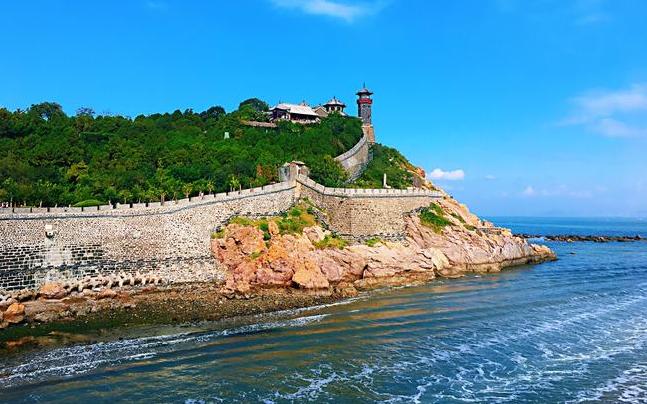
7.Yongfu Temple永福寺
The restoration of Yongfu Temple in Hangzhou as a Buddhist culture is indeed one of the great blessings of the Buddhist circle in Hangzhou. Its rich Buddhist historical and cultural resources and Buddhist tourism cultural resources complement each other, and it is bound to become another Buddhist sightseeing spot in Lingyin Scenic Area, adding a lot to the tourism of West Lake Scenic Area.
Hangzhou Yongfu Temple is located at the foot of the stalagmite peak about one li west of Lingyin Temple. It has a history of more than 1,600 years since the founding of the mountain by Zen Master Huili in the Eastern Jin Dynasty. According to “Temple Views” in Volume 32 of “Hangzhou Fuzhi” during the Kangxi period of the Qing Dynasty, Yongfu Temple is located at the foot of Xingsheng Mountain opposite to Huyuan Cave in Feilai Peak. , both founded by Zen Master Huili. According to records, in the first year of Xianhe in the Eastern Jin Dynasty (326), Huili, an eminent monk from West India, came to Hangzhuoxi to build a nunnery, and successively built ten Taoist temples, including Lingjiu and Lingyin. history.
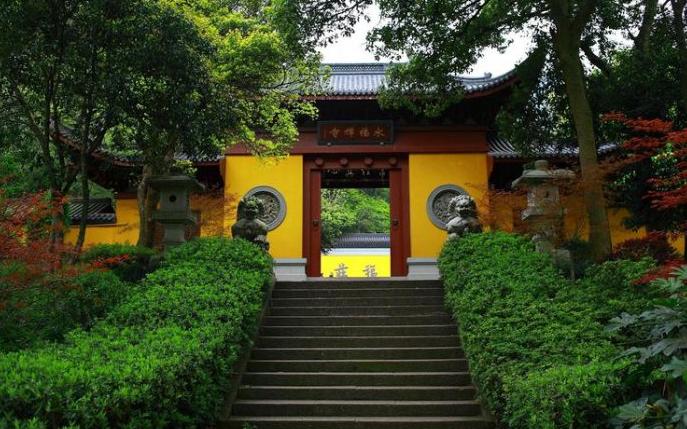
8.Labrang Monastery拉卜楞寺
Labrang Monastery is located in Xiahe County, Gannan Tibetan Autonomous Prefecture, Gansu Province. The full name in Tibetan is “Gadan Xiazhu Darji Zhaxi Yisu Qijulang”, which means Juxidao Xiuxing Jixiang Youxuan Temple. It is referred to as Zhaxiqi Temple for short, and it is generally called Labrang Temple. Labrang Monastery is the pronunciation of “La Zhang” in Tibetan, which means the residence of the living Buddha master. It is one of the six major monasteries of the Gelug Sect of Tibetan Buddhism, and is known as the “World Tibetan Institute” by the world. At its peak, there were more than 4,000 monks, and it was opened to the outside world for tourism in 1980. At the 2018 Northwest China Tourism Marketing Conference and Tourism Equipment Exhibition, it was shortlisted for the “100 Magical Northwest Scenes” list.
The master of the temple is the sixth Jamyang Hutuktu, and other leaders include the Eight Great Khenpos and the Four Great Dachi. Labrang Monastery is known to have 108 monasteries in history (in fact, it is much larger than this number), and it is the political and religious center in Gannan area. Labrang Monastery retains the best Tibetan Buddhist teaching system in the country. The oldest and only surviving Buddhist hall in the entire temple was built during the period of the first living Buddha Jamyang, which is the Buddhist hall of the Lower Tantra College next to the Great Sutra Hall.
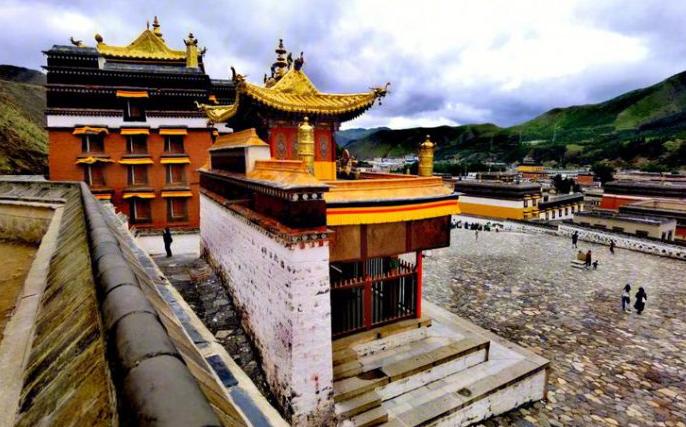
9.Kaiyuan Temple开元寺
Kaiyuan Temple is located on the West Street of Licheng District, Quanzhou City, Fujian Province. It is an important cultural relic and historic site in the southeast coast of China, and it is also the largest Buddhist temple in Fujian Province. The temple was founded in the second year of Chuigong (686) in the early Tang Dynasty. It was originally named Lotus Daochang, and was renamed Kaiyuan Temple in the 26th year of Kaiyuan (738). It was the largest and most prominent Buddhist temple in Quanzhou during the Song and Yuan Dynasties. The main existing temples were built in the Ming and Qing dynasties, with a length of 260 meters from north to south and a width of 300 meters from east to west, covering an area of 78,000 square meters.
In 1982, Kaiyuan Temple was listed as the second batch of national key cultural relics protection units. On July 25, 2021, Quanzhou: “Song and Yuan China’s World Ocean Commerce Center” was reviewed and approved by the 44th World Heritage Conference, and was successfully included in the “World Cultural Heritage List”, becoming China’s 56th World Heritage Site, Quanzhou Kaiyuan Temple It is one of the 22 representative historic sites.
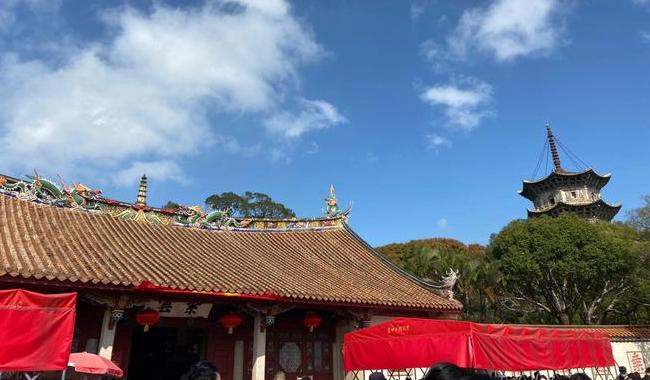
10.White Horse Temple白马寺
White Horse Temple is located on the side of National Highway 310, White Horse Temple Town, Huihe District, Luoyang City, Henan Province. It was built in the eleventh year of Yongping in the Eastern Han Dynasty (AD 68). It was the first government-run temple built after Buddhism was introduced to China. It is China, “Shiyuan” and “ancestral court” in Vietnam, North Korea, Japan and European and American countries.
White Horse Temple spread Buddhism to North Korea, Japan and Southeast Asia, popularized Buddhism in Asia, and later entered Europe and the United States, becoming a holy place for Buddhist believers from all over the world to visit. Therefore, since the end of the 20th century, Japan has donated money to rebuild the bell tower of White Horse Temple and erected a statue of Kukai; the governments of Thailand, India, and Myanmar have successively invested in the construction of Buddhist temples in White Horse Temple, making it the only international temple in the world with Buddhist temples in the styles of China, India, Myanmar, and Thailand. Hua Temple. South Korea, Singapore, and Malaysia all came here to be ordained, and the United States, Germany, and Canada all attended the abbot’s ascension ceremony . As the most internationalized temple, White Horse Temple is truly “the best temple in the world”.
